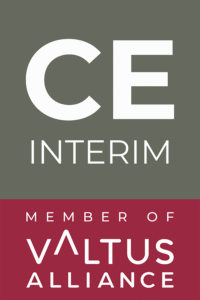Not enough time to read the full article? Listen to the summary in 2 minutes.
Introduction
Interim management in Central and Eastern Europe (CEE) has evolved significantly over the past few decades, influenced by a mix of historical, political, and cultural factors. This article explores the history of interim management in this region, from the fall of communism to modern times. By looking into the unique challenges and opportunities faced by interim managers, we aim to provide a clear understanding of how interim management practices have developed in Central and Eastern Europe.
CE Interim provides expert interim managers who are highly experienced and capable of working across different cultures with global expertise.
I. The Historical Context
1.1 Post-Communist Transition
The fall of the Iron Curtain in 1989 marked a major turning point for Central and Eastern Europe. Countries in the region began shifting from centrally planned economies to market-focused systems. This rapid change created a need for expert managers to guide organizations through the transition.
1.2 Economic Liberalization and Privatization
Economic freedom and privatization were key aspects of the post-communist transition. Many government-owned businesses were privatized, and new private businesses emerged. International interim managers played a crucial role in restructuring these organizations, bringing in modern management practices, and improving efficiency.
1.3 Integration into the European Union
Several CEE countries joined the European Union in the early 2000s, accelerating economic integration and modernization. This brought new business opportunities and challenges, requiring interim managers with cross-cultural skills to guide diverse business environments.
II. The Emergence of Interim Management in Central and Eastern Europe
2.1 Early Adopters
In the 1990s, multinational corporations were among the first to introduce interim management practices in CEE. These companies often brought in interim managers from Western Europe to lead local operations and ensure alignment with global standards.
2.2 Local Adaptation
As interim management gained grip, local firms began to see its value. This led to the growth of a local interim management industry, focused on meeting the specific needs and challenges of businesses in the region.
2.3 Development of Interim Management Agencies
Interim management agencies played a crucial role in formalizing the industry. These agencies matched interim managers with organizations in need of their expertise, sharing best practices and professional standards.
III. Cultural Challenges and Adaptations
3.1 Communication Styles
Countries in CEE have diverse communication styles, influenced by their historical and cultural backgrounds. Interim managers need to navigate these differences, from the direct communication preferred in Poland to the more formal and hierarchical communication found in the Czech Republic. CE Interim equips its managers with the necessary cultural training to effectively manage these differences.
3.2 Leadership and Hierarchy
Leadership styles in CEE vary, with some countries preferring hierarchical structures while others favor more egalitarian approaches. Interim managers must adapt their leadership style to fit the cultural context of the organizations they work with. CE Interim’s managers are adept at personalizing their leadership approaches to align with local expectations.
3.3 Decision-Making Processes
Decision-making in CEE can be influenced by historical legacies of centralized control. This may result in a more cautious and consensus-driven approach. Interim managers need to understand these dynamics and adjust their strategies accordingly. CE Interim managers excel in facilitating consensus while driving strategic decisions.
3.4 Building Trust and Relationships
Trust is critical for successful interim management in CEE. Given the historical context of political and economic upheaval, building trust with local teams and investors can be challenging. Interim managers should focus on building relationships and demonstrate reliability and integrity. CE Interim prioritizes building trust as a core component of its service delivery.
IV. Case Studies of Interim Management in Central and Eastern Europe
4.1 Poland
Poland’s transition to a market economy was marked by rapid growth and modernization. Interim managers played a key role in reorganizing government-owned businesses and implementing Western management practices. Success often depended on adapting to Poland’s direct communication style and hierarchical business culture.
4.2 Hungary
Hungary’s privatization efforts in the 1990s created opportunities for interim managers to lead restructuring projects. The country’s mix of hierarchical and egalitarian leadership styles required flexibility and adaptability, balancing assertiveness with a collaborative approach.
4.3 Czech Republic
The Czech Republic’s strong industrial base and strategic location attracted significant foreign investment. Interim managers were instrumental in integrating local operations with global standards. Understanding the Czech preference for consensus in decision-making was crucial for success.
4.4 Romania
Romania’s journey toward a market economy has been marked by significant transformations, particularly after its accession to the European Union in 2007. Interim managers have been pivotal in navigating the complexities of this shifting landscape, especially in sectors like telecommunications and energy. Their roles often involved driving efficiency improvements and modernizing operational practices while contending with the country’s unique blend of hierarchical and relational business cultures.
V. Current Trends and Future Directions
5.1 Increasing Demand for Interim Managers
The demand for interim managers in CEE continues to grow, driven by ongoing economic development, corporate restructuring, and the need for specialized expertise. Interim managers are increasingly sought after to lead digital transformation projects, implement sustainability initiatives, and manage mergers and acquisitions. CE Interim remains at the forefront, providing managers for these critical projects.
5.2 Cross-Cultural Training and Development
As the interim management industry matures, there is a growing emphasis on cross-cultural training and development. Interim managers are investing in enhancing their cultural competence to better navigate the diverse business environments in CEE.
5.3 Technology and Remote Interim Management
Advances in technology have enabled remote interim management, allowing interim managers to support organizations in CEE from different locations. This trend is likely to continue, providing greater flexibility and access to a broader pool of expertise.
Conclusion
The cross-cultural history of interim management in Central and Eastern Europe highlights the region’s resilience and adaptability. From the post-communist transition to the present day, interim managers have played a pivotal role in driving economic transformation and modernization. Understanding the cultural nuances and historical context of CEE is essential for interim managers to navigate the complex business landscapes and deliver successful outcomes.
As the demand for interim management continues to grow, cross-cultural competence will remain a critical skill for interim managers operating in this dynamic and diverse region. CE Interim is dedicated to providing expert interim management services that meet the unique needs of businesses in Central and Eastern Europe. With a focus on cultural competence and local expertise, CE Interim ensures its clients achieve their strategic objectives efficiently and effectively.





